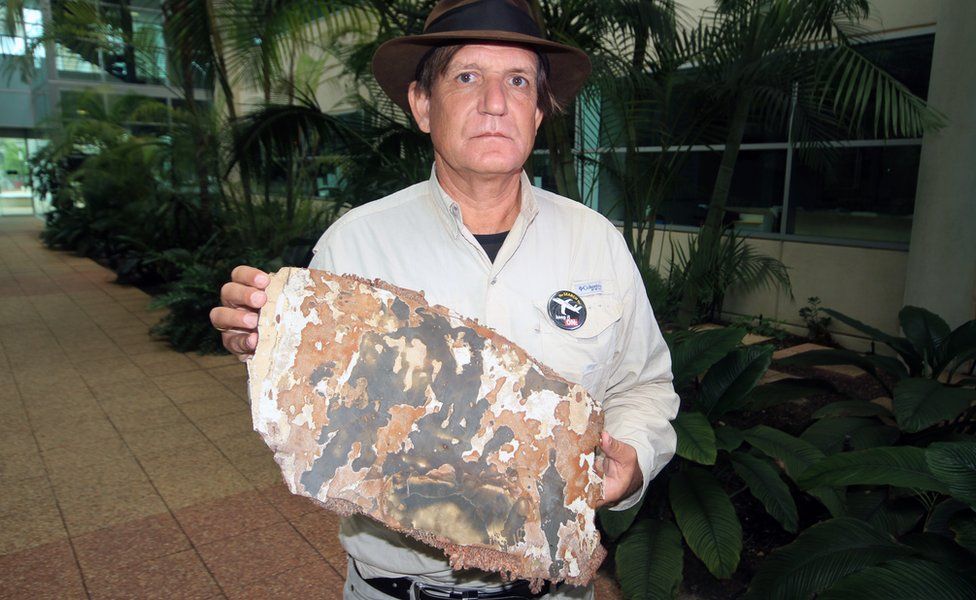MH370 search: New debris in Madagascar includes 'burnt parts'
- Published

Five new pieces of debris that could belong to the missing Malaysia Airlines flight MH370 have been found in Madagascar.
Two fragments appear to show burn marks, which if confirmed would be the first time such marks have been found.
MH370, flying from Kuala Lumpur to Beijing, had 239 people on board when it vanished in March 2014.
The flight is presumed to have crashed into the southern Indian Ocean after veering off course.
The findings were made by debris hunter Blaine Gibson, who has previously found other parts of the plane.
The most significant finding, according to Mr Gibson, is of the two alleged burnt pieces, recovered near Sainte Luce, in south-eastern Madagascar.
It is unclear, however, if the apparent burn marks were caused by fire prior to the crash or as a result of burning afterwards, he said.
Another small piece was found in the same area and two others in the north-eastern beaches of Antsiraka and Riake, where debris had already been found.
All five fragments have the "honeycomb" material found in other MH370 debris.
Analysis: By Richard Westcott, BBC Transport Correspondent
It's far too early to say whether Blaine Gibson's latest finds are significant or not.
They may not be from MH370. Even if they are, the apparent fire damage may have happened long after the aircraft came down - the debris could have been used on a beach bonfire.
But if the experts do eventually conclude that some of the debris comes from the plane and that there was a fire on board, they'll be our best clue yet to the fate of the flight.
An on-board fire makes the pilot suicide theory less likely, although not impossible of course.
Everyone dearly wants the underwater search to be successful. But if it's not - and they plan to stop looking in December - these small pieces of the aircraft washing up on remote beaches will be the only chance experts have of working out what happened.
Yet the only person looking for them is a self-funded, amateur American enthusiast.
That's why families of those on board tell me they want more effort put into searching beaches thousands of miles from where it's thought the aircraft came down.
The new discoveries were all sent to investigators at the Australian Transport Safety Bureau (ATSB), Mr Gibson said.
A number of other pieces of debris, some confirmed to have come from MH370, have been found in countries near Madagascar.
They include a section of the wing called a flaperon, found on Reunion Island, and a horizontal stabilizer from the tail section and a stabilizer panel with a "No Step" stencil discovered in Mozambique.
Mr Gibson, a lawyer from Seattle, has funded his own search for debris in east Africa.
Australia has been leading the search for the missing aircraft, using underwater drones and sonar equipment deployed from specialist ships.
The search, also involving Malaysia and China, has led to more than 105,000 sq km (40,500 sq miles) of the 120,000 sq km search zone being scoured so far.
But countries have agreed that in the absence of "credible new information" the search is expected to end later this year.